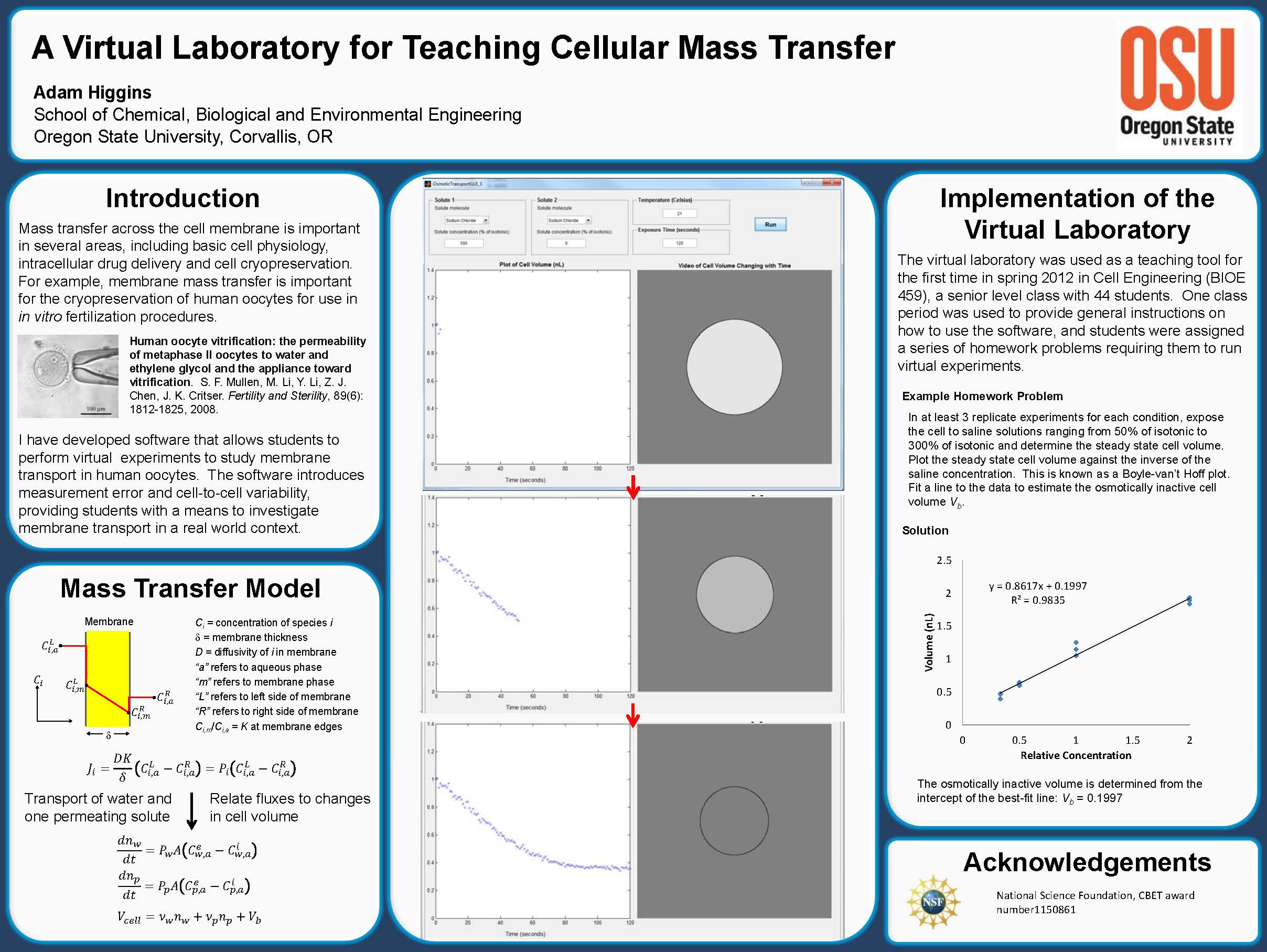The Higgins Laboratory

Energy balances, thermophysical and thermochemical calculations.
Offered every Winter quarter.
Application of engineering concepts (mass and energy conservation, thermodynamics, and transport phenomena) to cellular- and system-level human physiology; design considerations for biomedical interventions and devices.
Offered every Spring quarter.
Application of engineering methods and principles to the study of mammalian cells. Emphasis on mathematical models of cellular processes (e.g. cellular mass transport, protein-ligand interactions, cellular mechanics) and methods for probing the physical characteristics of biological molecules and cells.
Offered every Fall quarter.
I have developed instructional materials for teaching cell membrane mass transfer, including a virtual laboratory software tool (written in MATLAB) that simulates cell volume changes caused by membrane transport. This virtual laboratory software allows students generate and test their own hypotheses about membrane transport by observing the effects of temperature, solute type and concentration on the resulting cell volume changes. The software introduces measurement error and cell-to-cell variability, providing students with a means to study cell membrane transport in a real world context. The links below provide fill in the blank lecture notes, the MATLAB files needed for running the virtual laboratory software, and some representative homework problems. Instructors interested in incorporating cell membrane transport into their courses are encouraged to contact me. This work was funded by the National Science Foundation, CBET award number 1150861.

Adam Higgins
School of Chemical, Biological and Environmental Engineering
Oregon State University
Corvallis, OR 97331
adam.higgins@oregonstate.edu
Phone: (541)-737-6245
Fax: (541)-737-4600